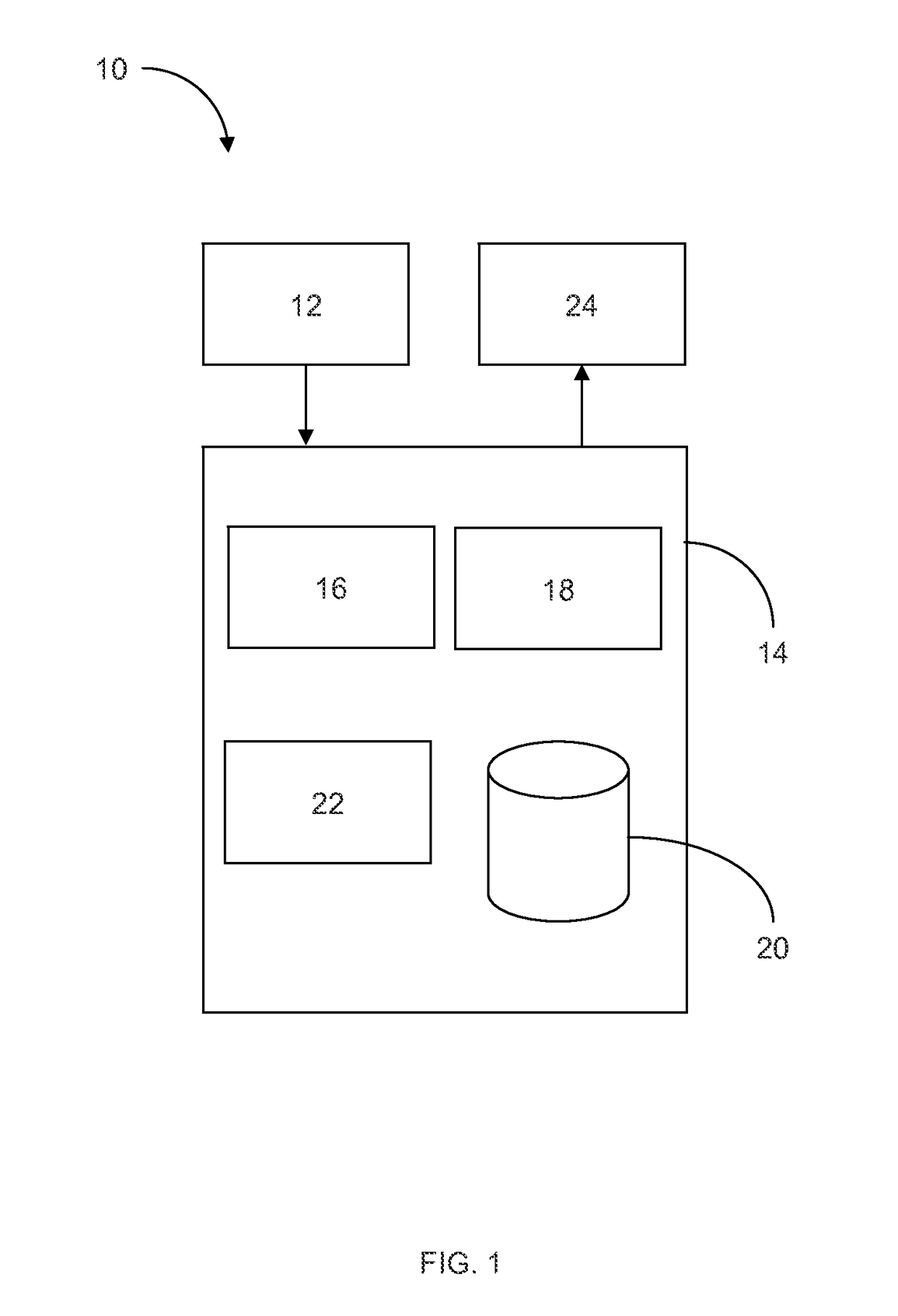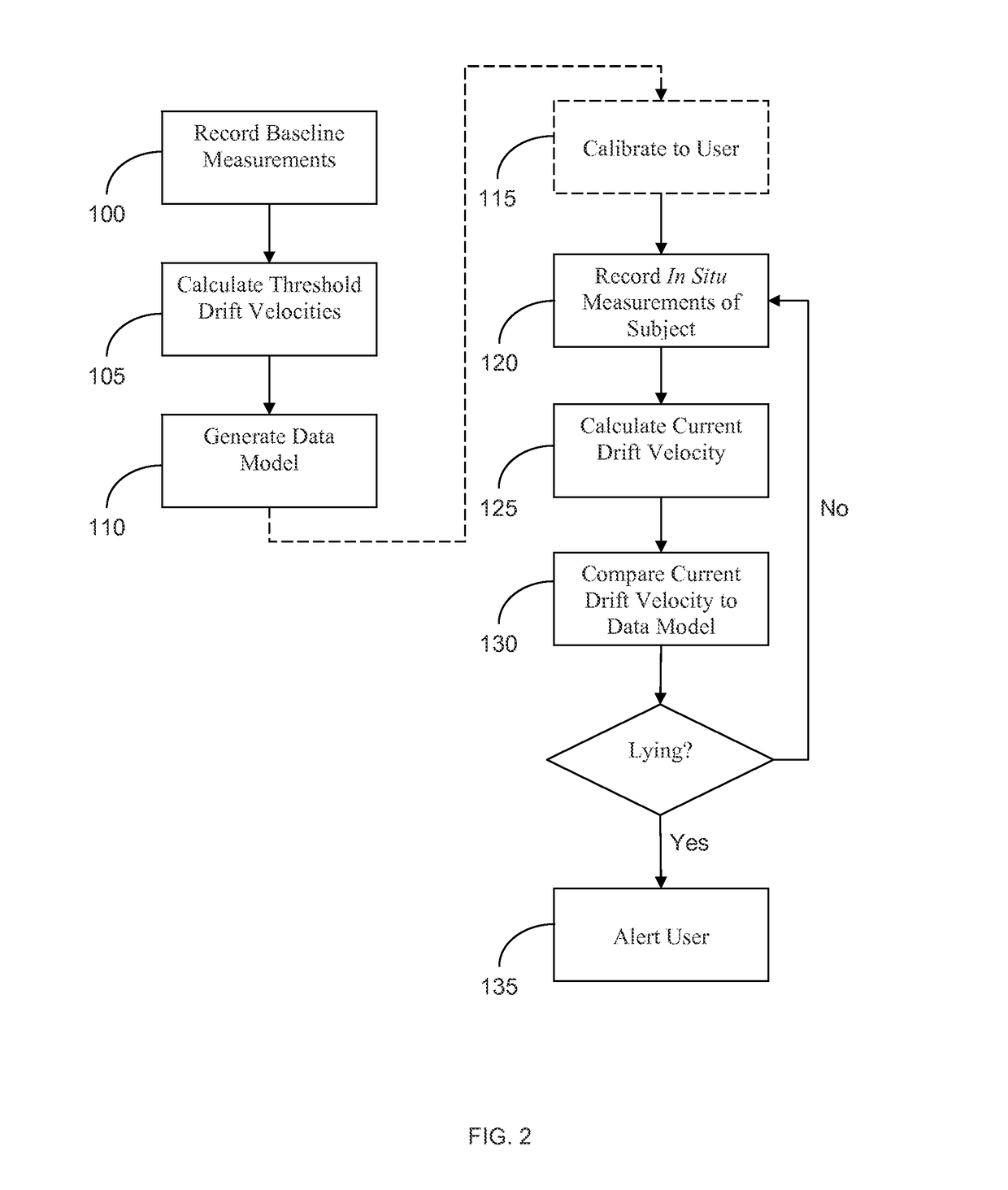Systems and methods for non-intrusive deception detection
a non-intrusive deception and detection system technology, applied in the field of systems and methods for acquiring data from a subject, can solve the problems of a large public risk, suggestion failure to represent practical advancements in the field, and reliance on measuring indirect physiologic responses
- Summary
- Abstract
- Description
- Claims
- Application Information
AI Technical Summary
Benefits of technology
Problems solved by technology
Method used
Image
Examples
Embodiment Construction
[0016]Systems and methods for detecting lies and deception through observation of eye movements are described herein. Deceptive intent or practice is shown by the inventors to affect oculomotor dynamics, including saccadic metrics and intersaccadic drift metrics. Select oculomotor dynamics can be tracked against a baseline to alert a subject that the subject is lying or attempting to deceive.
[0017]The systems and methods described herein are offered for illustrative purposes only, and are not intended to limit the scope of the present invention in any way. Indeed, various modifications of the invention in addition to those shown and described herein will become apparent to those skilled in the art from the foregoing description and the following examples and fall within the scope of the appended claims. For example, specific disclosure related to lie detection is provided, although it will be appreciated that the systems and methods may be applied for detection of other mental state...
PUM
 Login to View More
Login to View More Abstract
Description
Claims
Application Information
 Login to View More
Login to View More - R&D
- Intellectual Property
- Life Sciences
- Materials
- Tech Scout
- Unparalleled Data Quality
- Higher Quality Content
- 60% Fewer Hallucinations
Browse by: Latest US Patents, China's latest patents, Technical Efficacy Thesaurus, Application Domain, Technology Topic, Popular Technical Reports.
© 2025 PatSnap. All rights reserved.Legal|Privacy policy|Modern Slavery Act Transparency Statement|Sitemap|About US| Contact US: help@patsnap.com



